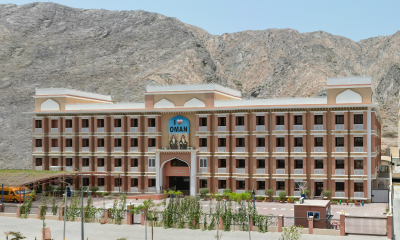News
MENA sovereign debt report: Borrowing increased in 2015, expected to remain elevated In 2016
Standard & Poor’s Ratings Services projects that the 13 Middle East and Northern African (MENA) sovereigns that it rates will borrow an equivalent of $134 billion from long-term commercial sources in 2016. This compares with borrowing of $143 billion in 2015, which was more than double the $68 billion we expected would be borrowed in that year.


Standard & Poor’s Ratings Services projects that the 13 Middle East and Northern African (MENA) sovereigns that it rates will borrow an equivalent of $134 billion from long-term commercial sources in 2016. This compares with borrowing of $143 billion in 2015, which was more than double the $68 billion we expected would be borrowed in that year.
However, we note that our updated estimate for 2015 includes an additional $30 billion in borrowing by Iraq. We have included Iraq in the survey for the first time, having assigned it sovereign credit ratings in September 2015. Due to lack of clarity with regard to the debt management policies of some Gulf Cooperation Council (GCC) countries, we had made the assumption that emerging fiscal deficits would be wholly financed by drawing down on assets.
However, in the case of Saudi Arabia, although the sovereign did liquidate some assets, we estimate that the government also borrowed $26 billion dollar equivalent in 2015. All in all, we estimate GCC countries’ borrowing at $40 billion in 2015 rather than the $5 billion we projected in March 2015.
We believe a 9% decrease in long-term commercial debt issuance in 2016 compared with 2015 will largely result from a decline in borrowing by the Egyptian government, due to what we expect will be modest fiscal consolidation. About 40%, or $53 billion, of the sovereigns’ gross borrowing will be to refinance maturing long-term debt, compared with $61 billion in 2015, resulting in an estimated net borrowing requirement of $81 billion.
Consequently, we project that the commercial debt stock of the MENA sovereigns we rate will reach an equivalent of $667 billion by the end of 2016, up by $85 billion, or 15%, from 2015. Adding in bi- and multilateral debt, the total stock will reach $814 billion, a year-on-year increase of $116 billion, or 17%. The share of noncommercial official debt (bi- and multilateral) in total sovereign debt is set to rise to 22% of total debt as of year-end 2016, from 20% in 2015.
We expect that outstanding short-term commercial debt will reach $163 billion at year-end 2016.
We project that, during 2016, the share of commercial sovereign debt rated in the ‘AA’ category will be 5% of the total. We project that the share of commercial borrowing rated in the ‘A’ category will be 24% of total commercial debt. At the same time, the share of debt rated in the ‘BBB’ category and below is set to account for 71%.
According to our calculations, Egypt will face the highest debt rollover ratio (including short-term debt) among rated MENA sovereigns, reaching 37% of GDP, followed by Bahrain (20%) with Iraq and Lebanon close behind at 18%. The debt rollover ratios for infrequent issuers with small, but lumpy, debt obligations can be very low if little or no debt matures in a given year and if they do not have a significant amount of short-term debt. The rollover ratios of sovereigns with higher proportions of official debt tend to be lower, because official debt typically has longer maturities than commercial debt.
These estimates account only for the 13 MENA sovereigns Standard & Poor’s rates. Our estimates focus on debt issued by a central government in its own name and exclude local government and social security debt, as well as debt issued by other public bodies and government-guaranteed obligations. In terms of commercial debt instruments, our estimates for long-term borrowing include bonds (with maturities of more than one year) issued either on publicly listed markets or sold as private placements, as well as commercial bank loans.
-

 Banking & Finance2 weeks ago
Banking & Finance2 weeks agoOman Oil Marketing Company Concludes Its Annual Health, Safety, Environment, and Quality Week, Reaffirming People and Safety as a Top Priority
-

 Economy2 months ago
Economy2 months agoMaal Card: What Oman’s New National Payment Card Means for Everyday Users
-

 News2 months ago
News2 months agoSheikh Suhail Bahwan, Chairman of Suhail Bahwan Group, Passes Away
-

 News1 month ago
News1 month agoOIG Appoints New CEO to Lead Its Next Chapter of Excellence
-

 Economy2 months ago
Economy2 months agoOman Unveils Official Omani Rial Symbol in Landmark Move to Boost Global Currency Presence
-

 News1 month ago
News1 month agoReport: How India & The Middle East Are Exploiting Immense Economic Synergies
-

 Uncategorized1 month ago
Uncategorized1 month agoOman’s ISWK Cambridge Learners Achieve ‘Top in the World’ and National Honours in June 2025 Cambridge Series
-

 Trade2 months ago
Trade2 months agoConsulate Office of the Republic of South Africa opens in Muscat, enhancing bilateral relations





























You must be logged in to post a comment Login